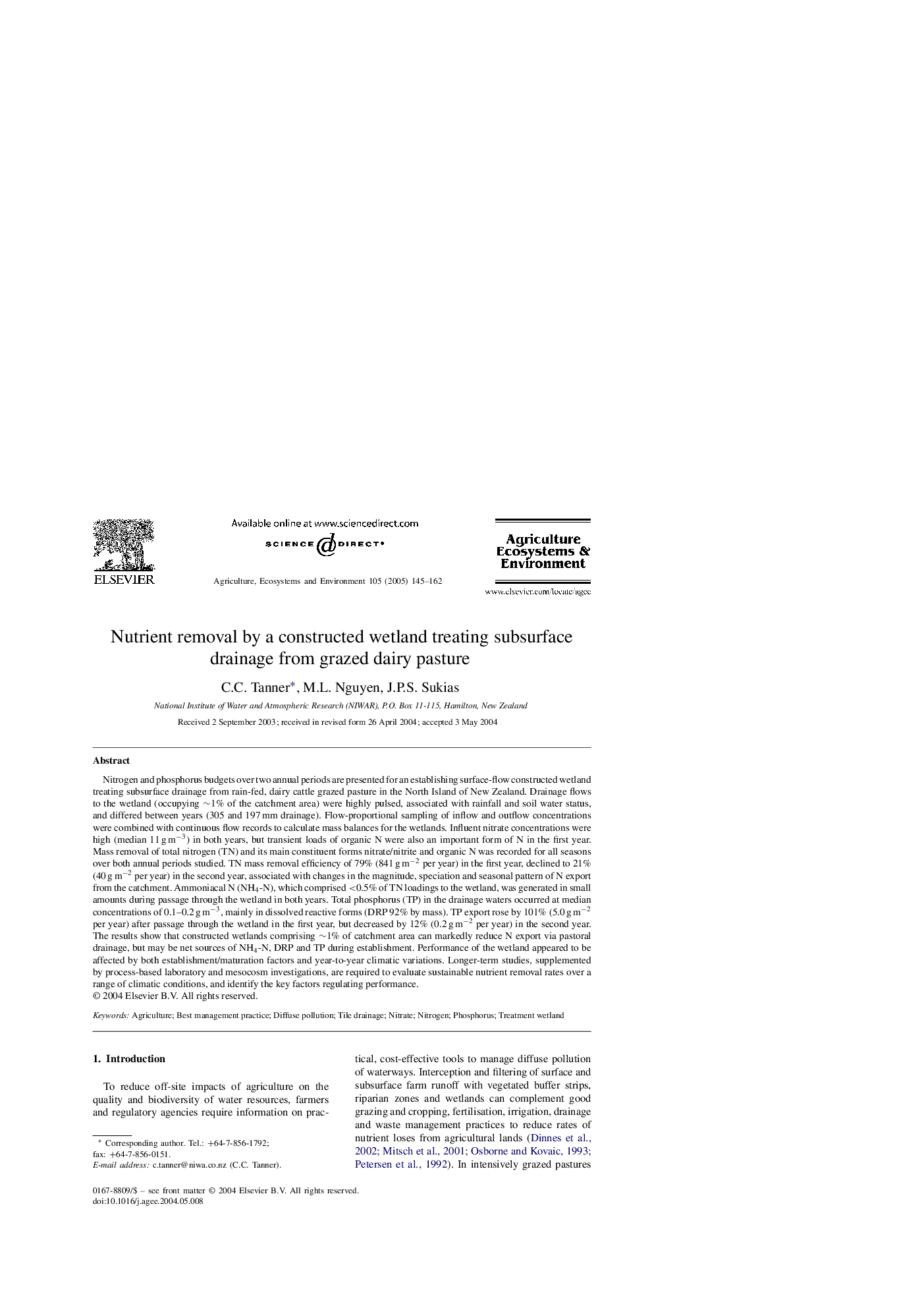| Article ID | Journal | Published Year | Pages | File Type |
|---|---|---|---|---|
| 8970885 | Agriculture, Ecosystems & Environment | 2005 | 18 Pages |
Abstract
Nitrogen and phosphorus budgets over two annual periods are presented for an establishing surface-flow constructed wetland treating subsurface drainage from rain-fed, dairy cattle grazed pasture in the North Island of New Zealand. Drainage flows to the wetland (occupying â¼1% of the catchment area) were highly pulsed, associated with rainfall and soil water status, and differed between years (305 and 197 mm drainage). Flow-proportional sampling of inflow and outflow concentrations were combined with continuous flow records to calculate mass balances for the wetlands. Influent nitrate concentrations were high (median 11 g mâ3) in both years, but transient loads of organic N were also an important form of N in the first year. Mass removal of total nitrogen (TN) and its main constituent forms nitrate/nitrite and organic N was recorded for all seasons over both annual periods studied. TN mass removal efficiency of 79% (841 g mâ2 per year) in the first year, declined to 21% (40 g mâ2 per year) in the second year, associated with changes in the magnitude, speciation and seasonal pattern of N export from the catchment. Ammoniacal N (NH4-N), which comprised <0.5% of TN loadings to the wetland, was generated in small amounts during passage through the wetland in both years. Total phosphorus (TP) in the drainage waters occurred at median concentrations of 0.1-0.2 g mâ3, mainly in dissolved reactive forms (DRP 92% by mass). TP export rose by 101% (5.0 g mâ2 per year) after passage through the wetland in the first year, but decreased by 12% (0.2 g mâ2 per year) in the second year. The results show that constructed wetlands comprising â¼1% of catchment area can markedly reduce N export via pastoral drainage, but may be net sources of NH4-N, DRP and TP during establishment. Performance of the wetland appeared to be affected by both establishment/maturation factors and year-to-year climatic variations. Longer-term studies, supplemented by process-based laboratory and mesocosm investigations, are required to evaluate sustainable nutrient removal rates over a range of climatic conditions, and identify the key factors regulating performance.
Keywords
Related Topics
Life Sciences
Agricultural and Biological Sciences
Agronomy and Crop Science
Authors
C.C. Tanner, M.L. Nguyen, J.P.S. Sukias,
